Abstract
Soutar, C. A., Carruthers, M., and Pickering, C. A. C. (1977).Thorax, 32, 677-683. Nocturnal asthma and urinary adrenaline and noradrenaline excretion. Urinary adrenaline and noradrenaline excretion, heart rate, and peak expiratory flow rate have been measured every two hours for 24 hours in seven asthmatic patients suffering from nocturnal or early morning exacerbations of dyspnoea. The excretions of these catecholamines were normal or slightly raised, this being consistent with a normal response to asthma or the conditions of the test.
The expected physiological fall in catecholamine excretion occurred at night. In every patient the peak expiratory flow rate fell to its lowest values during the period of lowest catecholamine excretion, and the mean two-hourly peak expiratory flow rate for all seven patients was significantly related to the sum of the mean adrenaline and noradrenaline excretion in each preceding two-hour period (p<0·05).
Individually, in three patients the relationship between peak expiratory flow rate and adrenaline and noradrenaline excretion during the evening and night was so close as to be consistent with the hypothesis that changes in sympathetic tone mediated the changes in asthma. In a further three patients the relationship was present but less clear, and in one the changes in peak flow rate and catecholamine excretion were dissociated.
Studies of mean heart rate and sinus arrhythmia gap suggested that an increase in vagal tone at night might have mediated the early morning asthma in the patient in whom changes in catecholamine excretion were dissociated from change in peak flow rate.
These findings would be consistent with the view that the physiological reduction in sympathetic tone at night mediates the nocturnal and early morning exacerbation of dyspnoea in some asthmatics, although other mechanisms such as alterations in vagal tone must be important in others. Confirmation of a causal relationship requires further study.
Full text
PDF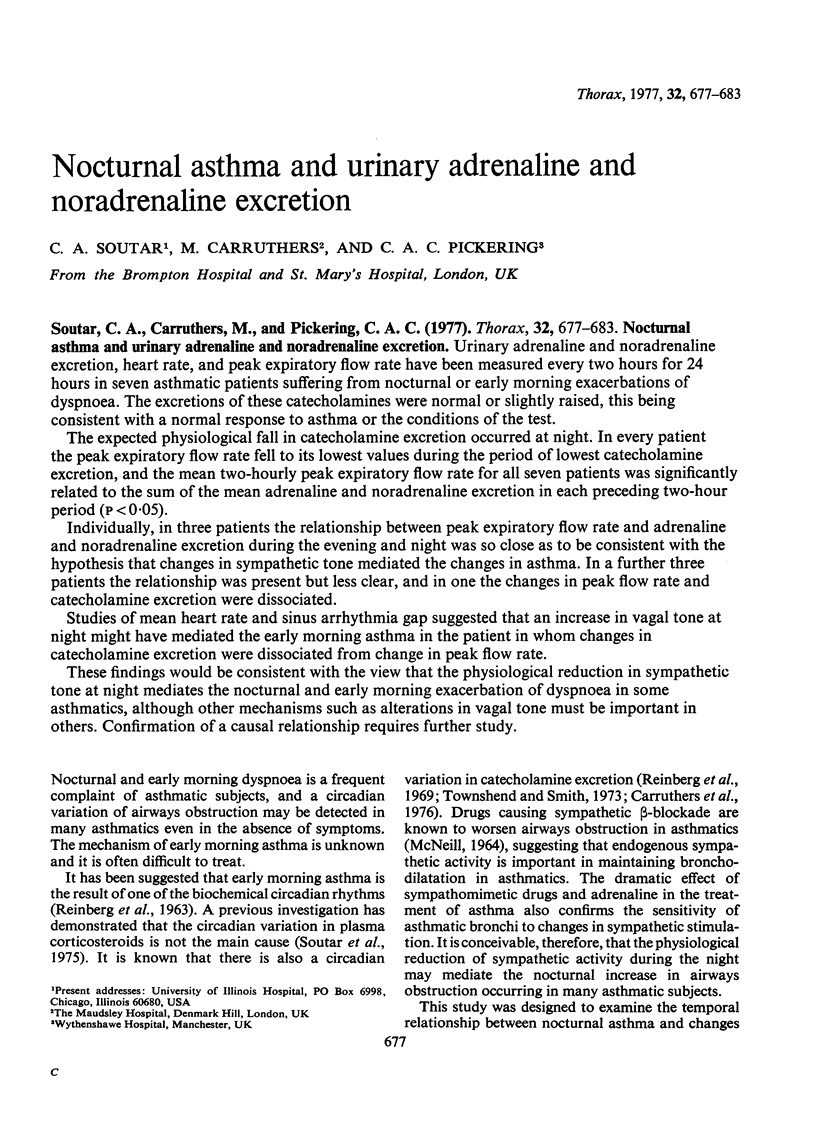
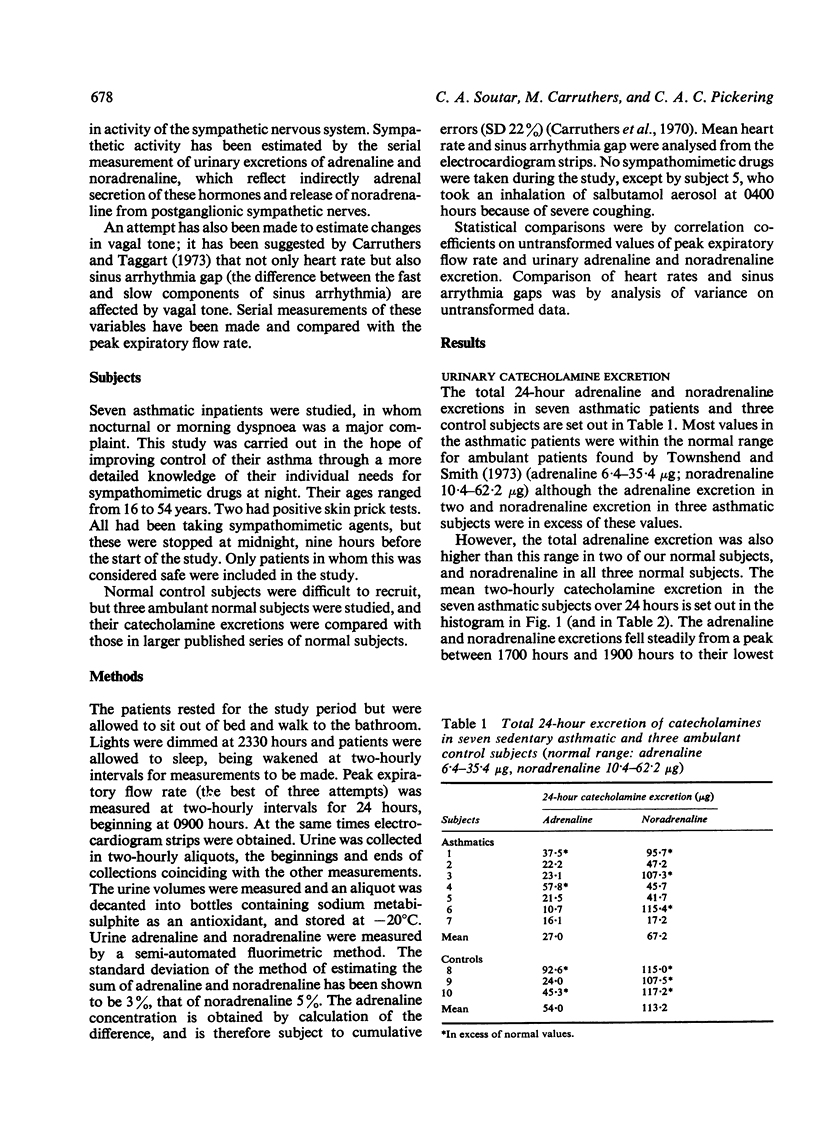
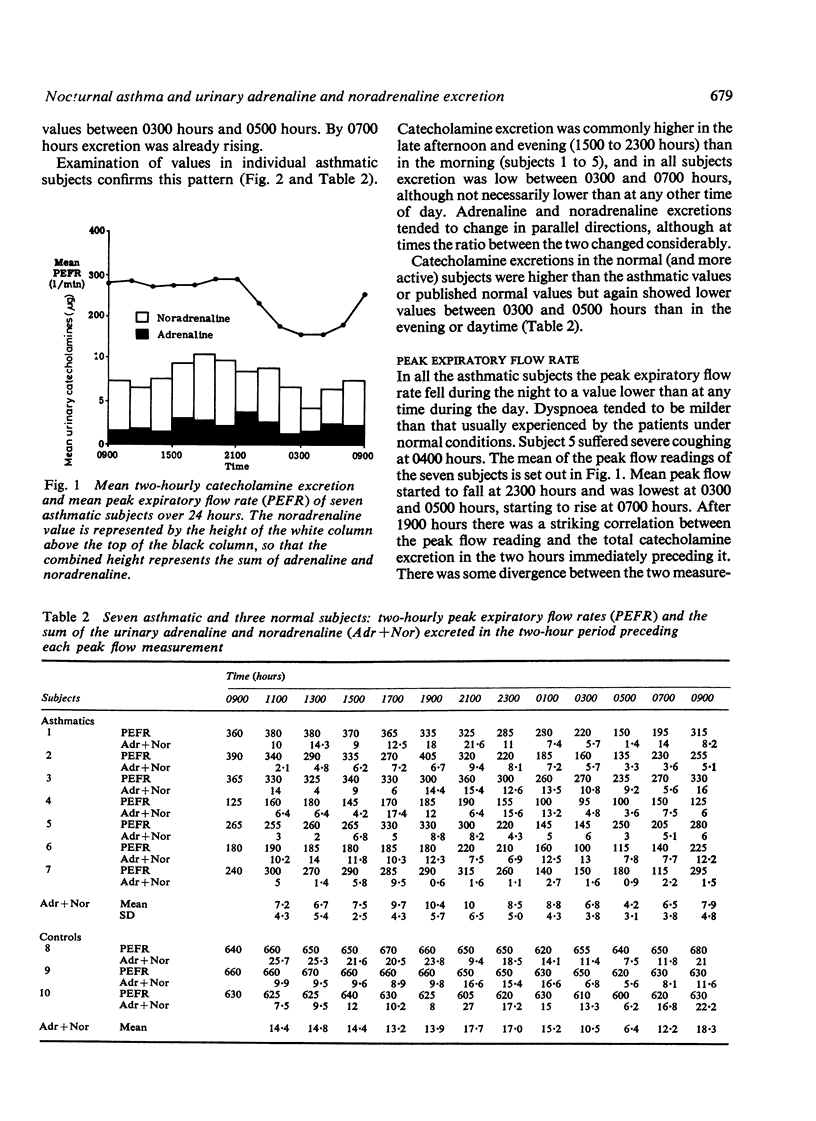

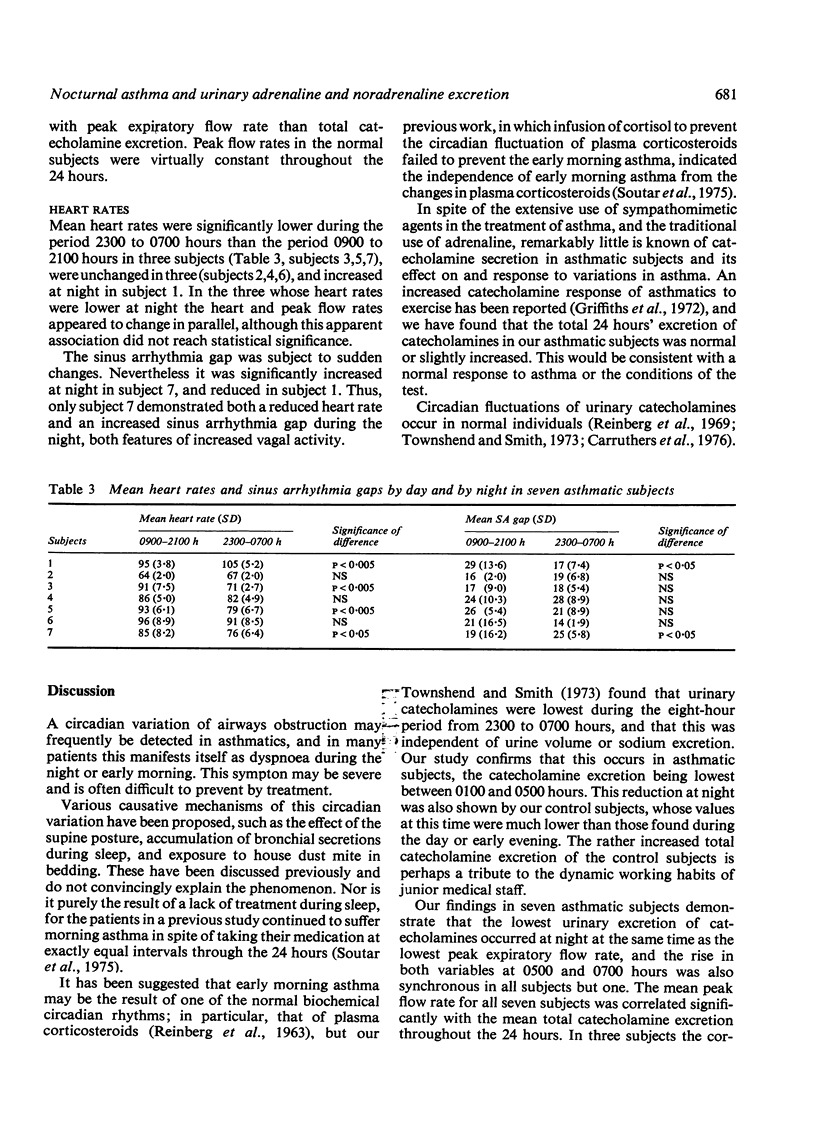
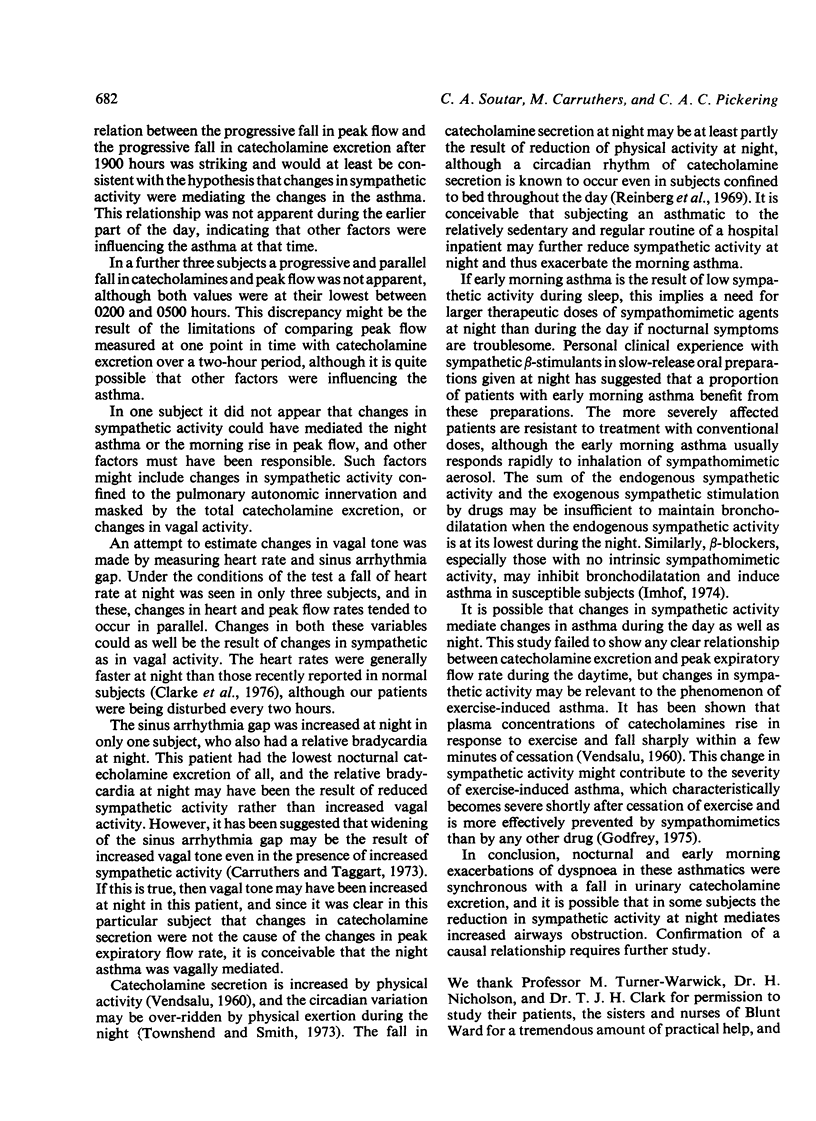
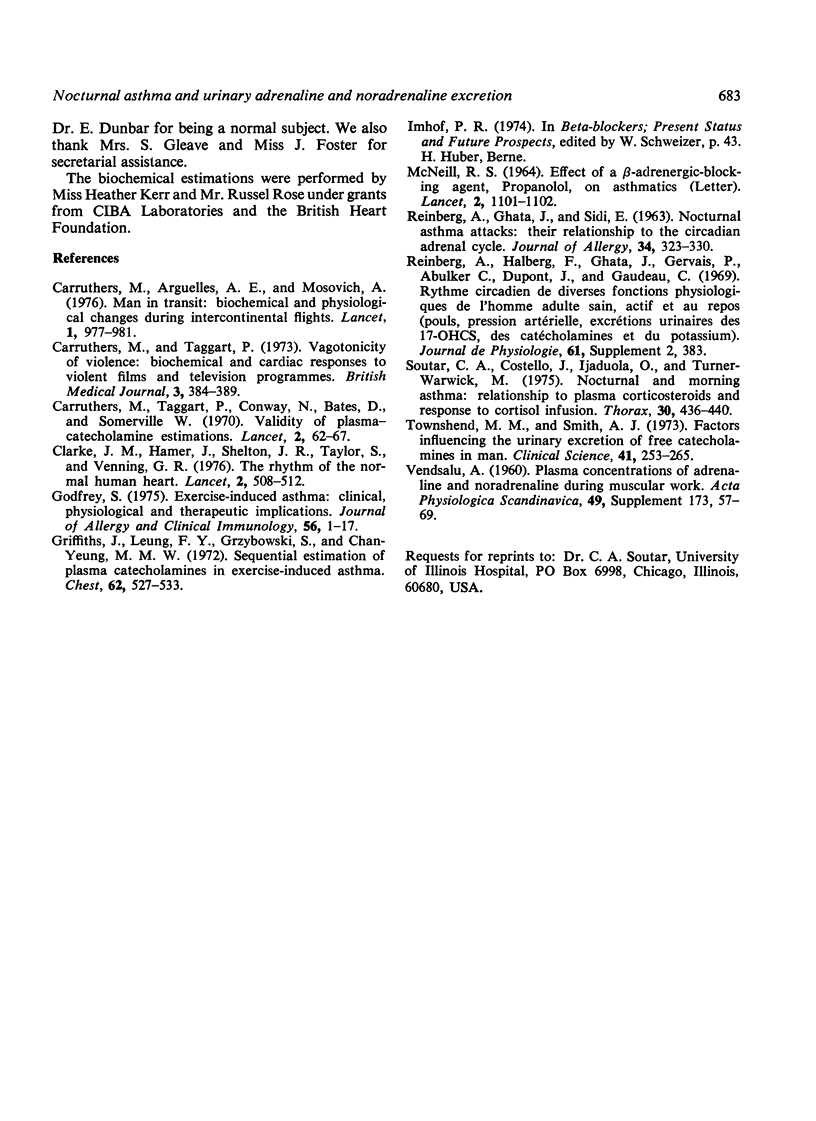
Selected References
These references are in PubMed. This may not be the complete list of references from this article.
- Carruthers M., Arguelles A. E., Mosovich A. Man in transit: Biochemical and physiological changes during intercontinental flights. Lancet. 1976 May 8;1(7967):977–981. doi: 10.1016/s0140-6736(76)91857-2. [DOI] [PubMed] [Google Scholar]
- Carruthers M., Conway N., Somerville W., Taggart P., Bates D. Validity of plasma-catecholamine estimations. Lancet. 1970 Jul 11;1(7663):62–67. doi: 10.1016/s0140-6736(70)92638-3. [DOI] [PubMed] [Google Scholar]
- Carruthers M., Taggart P. Vagotonicity of violence: biochemical and cardiac responses to violent films and television programmes. Br Med J. 1973 Aug 18;3(5876):384–389. doi: 10.1136/bmj.3.5876.384. [DOI] [PMC free article] [PubMed] [Google Scholar]
- Clarke J. M., Hamer J., Shelton J. R., Taylor S., Venning G. R. The rhythm of the normal human heart. Lancet. 1976 Sep 4;1(7984):508–512. doi: 10.1016/s0140-6736(76)90801-1. [DOI] [PubMed] [Google Scholar]
- Godfrey S. Exercise-induced asthma--clinical, physiological, and therapeutic implications. J Allergy Clin Immunol. 1975 Jul;56(1):1–17. doi: 10.1016/0091-6749(75)90029-9. [DOI] [PubMed] [Google Scholar]
- Griffiths J., Leung F. Y., Grzybowski S., Chan-Yeung M. M. Sequential estimation of plasma catecholamines in exercise-induced asthma. Chest. 1972 Nov;62(5):527–533. doi: 10.1378/chest.62.5.527. [DOI] [PubMed] [Google Scholar]
- MCNEILL R. S. EFFECT OF A BETA-ADRENERGIC-BLOCKING AGENT, PROPRANOLOL, ON ASTHMATICS. Lancet. 1964 Nov 21;2(7369):1101–1102. doi: 10.1016/s0140-6736(64)92617-0. [DOI] [PubMed] [Google Scholar]
- REINBERG A., GHATA J., SIDI E. NOCTURNAL ASTHMA ATTACKS: THEIR RELATIONSHIP TO THE CIRCADIAN ADRENAL CYCLE. J Allergy. 1963 Jul-Aug;34:323–330. doi: 10.1016/0021-8707(63)90049-2. [DOI] [PubMed] [Google Scholar]
- Reinberg A., Halberg F., Ghata J., Gervais P., Abulker C., Dupont J., Gaudeau C. Rythme circadien de diverses fonctions physiologique de l'homme adulte sain, actif et au repos (pouls, pression artérielle, excrétions urinaires des 17-OHCS, des catéchoalmines et du potassium). Test du Cosinor. J Physiol (Paris) 1969;61 (Suppl 2):383–383. [PubMed] [Google Scholar]
- Soutar C. A., Costello J., Ijaduola O., Turner-Warwick M. Nocturnal and morning asthma. Relationship to plasma corticosteroids and response to cortisol infusion. Thorax. 1975 Aug;30(4):436–440. doi: 10.1136/thx.30.4.436. [DOI] [PMC free article] [PubMed] [Google Scholar]
- Townshend M. M., Smith A. J. Factors influencing the urinary excretion of free catecholamines in man. Clin Sci. 1973 Mar;44(3):253–265. doi: 10.1042/cs0440253. [DOI] [PubMed] [Google Scholar]


